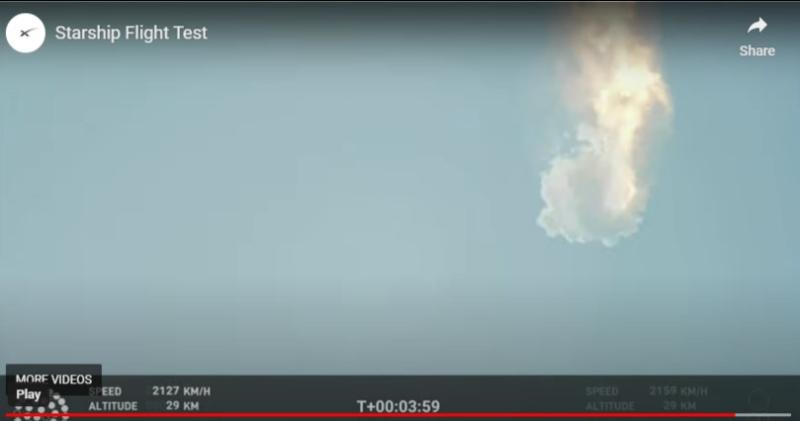SpaceX’s powerful Starship spacecraft and Super Heavy rocket cleared the launch pad successfully in Texas early Thursday on its second test launch attempt in four days.
However, the two-stage rocket failed to separate about four minutes into flight before exploding and crashing into the Gulf of Mexico. (FULL VIDEO REPLAY BELOW)
Just before the explosion, when the two-stage vehicle was spinning slowly well above the ground, a SpaceX official reminded viewers, “Everything after clearing the tower was icing on the cake.”
While the explosion was more properly termed by engineers as a RUD, or “rapid unscheduled disassembly,” it appeared on a video close-up to be caused after a failure to fire of six Raptor engines in the upper stage Starship spacecraft.
The Super Heavy booster stage was expected to detach from the upper Starship spacecraft stage more than three minutes into flight but that never occurred, as the combined stages slowly began to spin and eventually exploded less than a minute later.

RELATED: Update: SpaceX set to retry Starship launch Thursday after scrub
SpaceX CEO Elon Musk tweeted after the launch and RUD: “Congrats SpaceX team on an exciting test launch of Starship! Learned a lot for next test launch in a few months.”
SpaceX issued a statement saying Starship climbed as high as about 39 kilometers (24 miles), the highest of any Starship to date. Multiple engines did not function properly during the test and the vehicle lost altitude and began to tumble before SpaceX officials terminated the flight on both the booster and spaceship, basically resulting in an explosion that broke the stages apart before they fell into the Gulf.
“With a test like this, success comes from what we learn, and we learned a tremendous amount about the vehicle and ground systems today that will help us improve on future flights of Starship,” the statement says.
Starship and its components have undergone repeated testing including hop tests as early as 2019 and its SN15 test in May 2021 after nine high altitude tests in which Starship safely landed itself and was recovered.
Thursday’s flight test was intended to allow the Super Heavy booster to crash into the Gulf of Mexico, with the Starship spacecraft continuing to fly almost one Earth orbit to crash into the Pacific. Neither were expected to be recovered.
Here's a full replay of the SpaceX test launch on April 20: